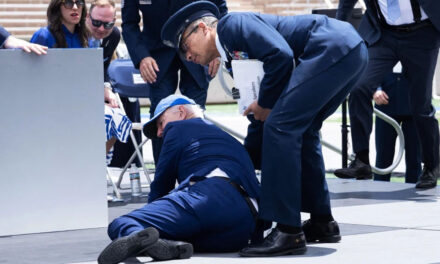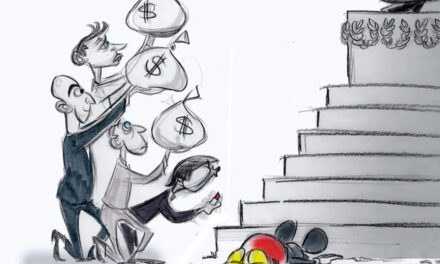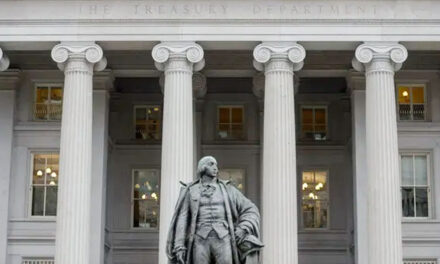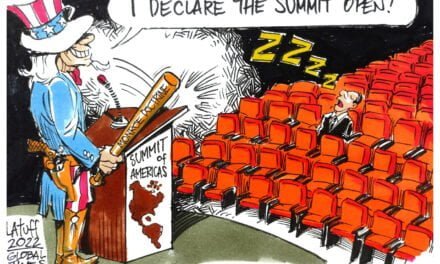
Red Light Camera Enforcement Isn’t About Safety, It’s About Green.
They say that red light cameras make intersections safer, and that it has nothing to do with generating revenue. Except nationwide, the empirical evidence doesn’t support that at all. (There are a plethora of other reasons besides safety concerns which make red light camera enforcement just plain “wrong,” mostly relating to reliability and civil liberties, but let’s just stick to accident prevention for now.)
In the U.S. and Canada, a number of studies have examined whether red light cameras produce a safety benefit. A 2005 study by the U.S. Federal Highway Administration (FHWA) suggests red light cameras reduce dangerous right-angle crashes, but with an increase in the number of rear-end collisions, leading to the total number of collisions remaining unchanged.
Interestingly, this FHWA study has been criticized as failing to explain an increase in fatalities associated with red light camera use. You see, the study also proved that more people died at intersections with red light cameras, but because the people earning money from camera use…the camera companies and municipalities generating the traffic violation revenue…they needed an argument, any argument, to dispute the findings.
A 2005 Virginia Department of Transportation study of the long-term effects of camera enforcement in the state found a decrease in the number of right-angle crashes with injuries, but an increase in rear-end crashes and an overall increase in the number of crashes causing injuries. In 2007, the department issued an updated report which showed that the overall number of crashes at intersections with red light cameras increased. Aurora, Colorado experienced mixed results with red light cameras. After starting camera enforcement at 4 intersections, crashes decreased by 60% at one, increased 100% at two, and increased 175% at the fourth.
A 2010 analysis by the Los Angeles City Controller found LA’s red light cameras hadn’t demonstrated an improvement in safety, specifically that of the 32 intersections equipped with cameras, 12 saw more crashes than before the cameras were installed, 4 had the same number, and 16 had fewer crashes, but that factors other than the cameras may have been responsible for the reduced crashes at the 16 intersections. This same year, Arizona completed a study of their statewide 76 photo enforcement cameras and decided they would not renew the program in 2011. Lower than expected revenue, mixed public acceptance, and mixed accident data were cited.
Yes, there have been studies showing the advantage of red light cameras, but photo enforcement of red light running in the U.S. has been defeated in the vast majority of electoral contests when the choice was put to the people. Were the voters who said no to red light camera enforcement law-breaking, pedal-heavy maniacs who just wanted to run red lights? Of course not.
So if there’s no statistical safety argument to be made for red light cameras, why do some municipalities still have them? Do you think it has anything to do with money, and not with actual safety, as its proponents claim? Gee, you would be right if you thought that!
Groups who “believe” red light cameras reduce crashes and increase safety have formed lobbying groups such as the Stop Red Light Running Coalition of Florida, which was created to lobby for the state law in Florida which first allowed red light cameras to be used. But guess what? These lobbying groups have ties to the red light camera industry. For example, a board member of the Stop Red Light Running Coalition of Florida was Ron Reagan, Treasurer of American Traffic Solutions’ (AFT’s) front group, The National Coalition for Safer Roads. And guess what American Traffic Solutions sells?
You guessed it—red light cameras and operational services, resulting in revenue collection. (In fact, The National Coalition for Safer Roads has been funded in large measure by the traffic camera industry.) And there is something very important that lobbyist groups do which affect public policy, right or wrong, and that’s contributing to political campaigns.
So in Florida, state law went into effect in 2010 allowing red light cameras on all state-owned right-of-ways and the fining of drivers who run red lights, despite the objections of the AAA, who argued that the law was primarily for raising money for the state and local government coffers, and would not increase road safety. And if you can’t trust the AAA, who can you trust?
So basically, more red light cameras mean more money for the manufacturers and operators (run by private companies who get a big piece of the traffic fines action), more revenue for insurance companies (who get higher rates when someone is issued a citation), more lobbyist money for the politicians, and more revenue for the cities, with no proven effectiveness in cutting down on the number of accidents or any increase in public safety. What a deal for you and me, huh!? But here’s the kicker:
Due to the agreements between the municipalities and camera service providers (the provider covers all camera installation costs and handles all enforcement procedures), it costs the municipality nothing. The municipality only sees revenue if enough people are caught red-handed, so to speak. In other words, if not enough people are caught, the municipality doesn’t see a dime, they have to pay the provider, or the provider pulls out of the deal. And that’s what has happened in a number of cities, such as Coral Springs, Florida, which has abandoned the program. “But they said it was all about safety!” you may ask. I guess not.
Other Florida towns and cities are still making a fortune from these tickets. Do they want to see the latest safety statistics? Of course not. Too much money is involved.
Some states now ban red light camera use entirely, others allow localities to make their own decision on the practice, and yet others are still trying to make up their minds on which way to go. But if anyone is really concerned about stopping red light running and reducing right-angle mid-intersection collisions, the solution is pretty simple:
You just increase the delay between the green light coming on in the east-west direction and the red light going off in the north-south direction. A full second is all it takes, and it can be implemented at all traffic light controlled intersections in the country at zero cost to anyone—and undeniably and dramatically reduce the number of these accidents and save lives.
But then again, there’s no money in that, is there?



























Ah Ira, common sense? Oh no not that! Just kidding of course. I agree and thought I’d add some thoughts of my own. I added to Larry’s post yesterday and he said he didn’t think I read it so to be clear I’m contributing, not arguing. Goodness.
I had this discussion with my uncle, a lawyer in Ohio when the idea was first proposed years ago. He approved and felt safer but I felt violated because machines are heartless and I’m very human so I make mistakes, I try to push and get through the light, dismiss intersections in the middle of the night… I think I’m a safe driver and have never caused an accident but I view the law fluidly I guess. On the interstate sometimes I think the safest thing to do is speed up, go around the problem and then slow down, but there’s a window where I could definitely get ticketed and I did once.
Anyway, the first time I received one of these tickets I took a screenshot that proved I had entered the intersection before the light turned red. They didn’t care and let me off because they couldn’t play the tape frame by frame. Ok.
The second time I chose again to argue my side but technically I was in the wrong. I explained to the judge as we watched the tape that it was the middle of the night, I clearly slowed to be cautious, there are no other cars and so I proceeded because it was safe. I think he could have let it end there and my experience the first time showed me that many people were being let off for reasons less substantial than that. But the judge was rigid, angrily disposed and black. I’m white. Hmmm. But he said that it was not ok to disobey the law upon my own discretion – that essentially I should follow it even in the vacuum of space. He waived the court costs that are added when you decide to come in and talk about it, but otherwise expected me to pay the ticket.
Well, it just so happened that the same morning I was talking with a lawyer about another matter and mentioned going to court. He told me to just not pay and forget about it… that there is something in Louisiana law that says an officer has to hand you the ticket or it is unenforceable.
Well, almost a year later I can tell you he appears to have been correct. I received more demands to pay that seemed very official as they floated to the trash can. Then I received a notice that it was being sent to a collection agency. Hmmm. A few weeks later I received a call that said I was being taped and blah blah blah… I hung up. I get calls from that number quite often now and just don’t answer. They don’t leave a message ( I suspect they don’t want to be taped ). Nothing is on my record, nothing has happened to my insurance… and about a month ago a story in the local paper said that somewhere above 50% of these tickets in this city never get paid – but they didn’t mention that they were unenforceable.
Food for thought… that’s my story and I’m stickin’ to it!
Oh – one other thing along the lines of your conclusions… if this really was about safety and not money then why wouldn’t the cameras be turned off in the middle of the night when nobody is in jeopardy?
BEWARE!!!!!!! I now stop for yellow lights! Red light cameras violate your right to trial. Red-light cameras is nothing more than a money making scheme.